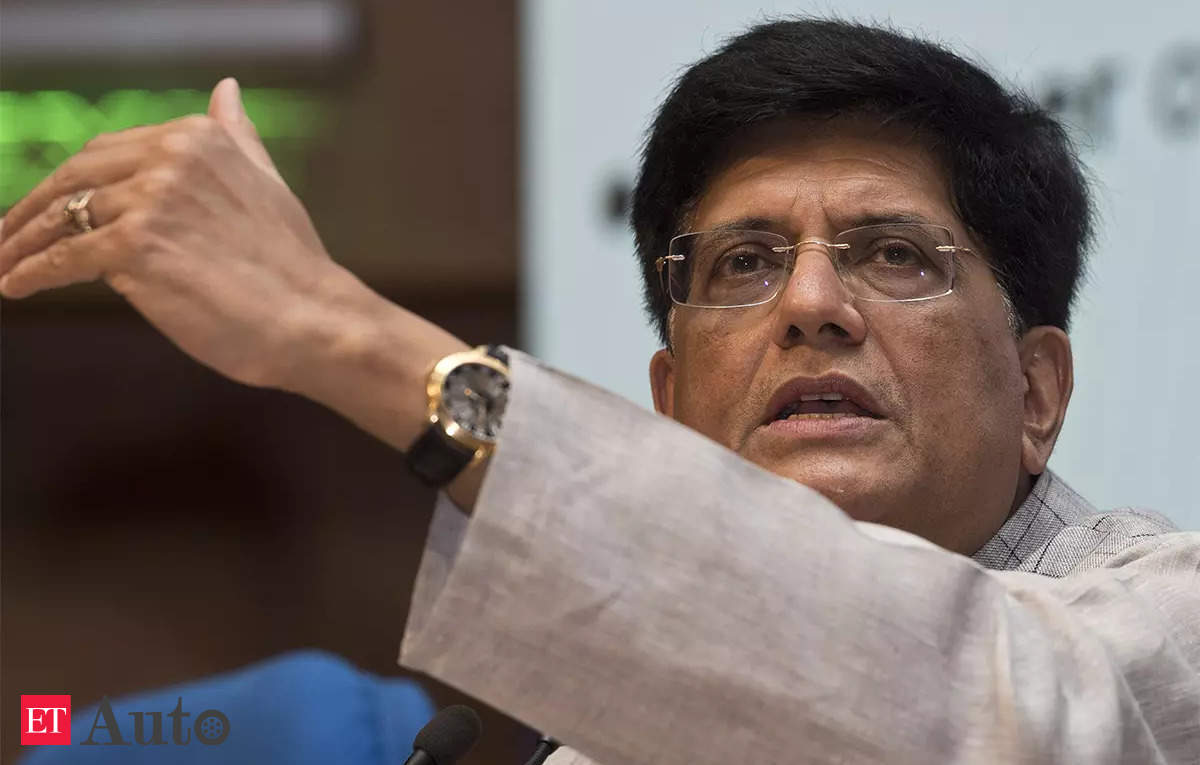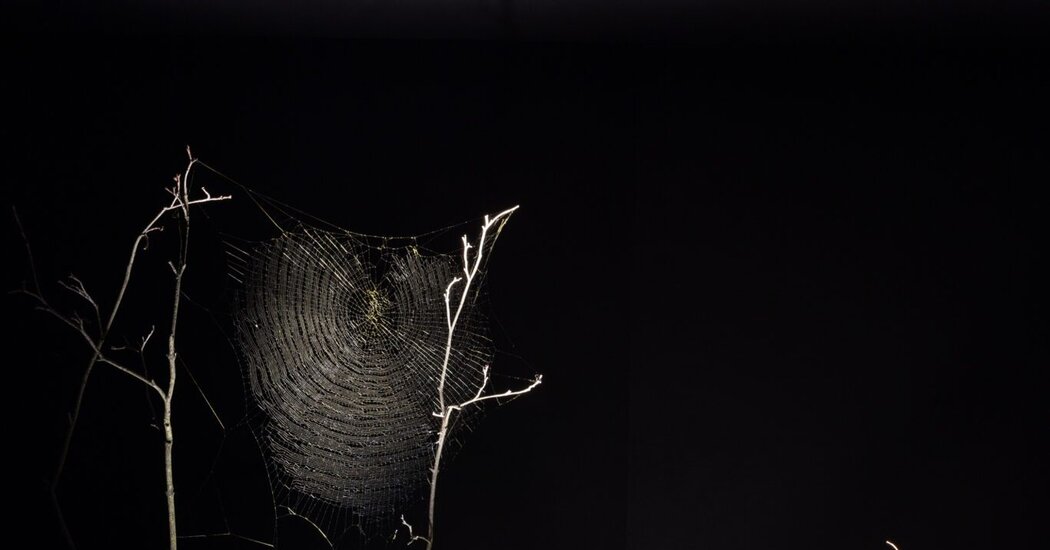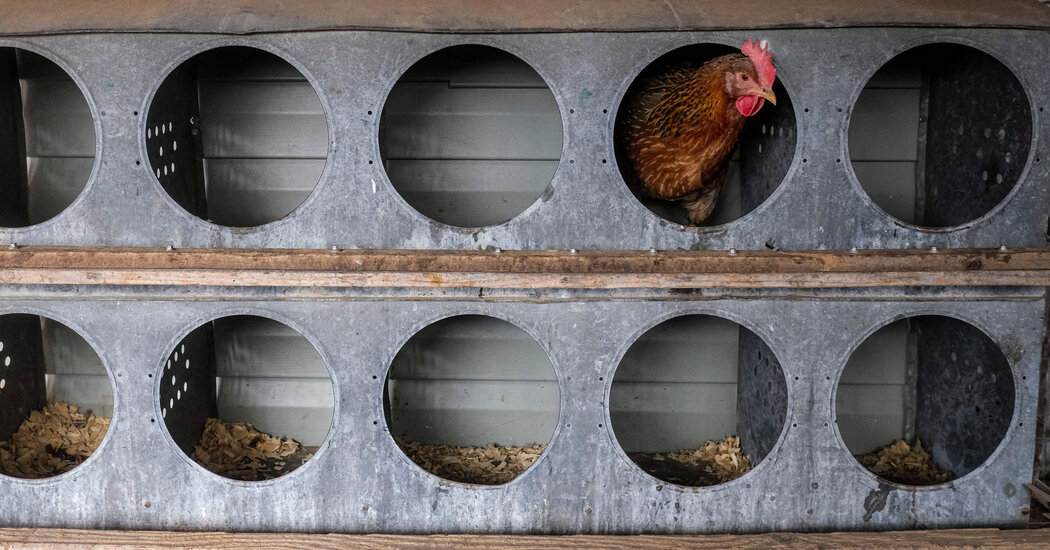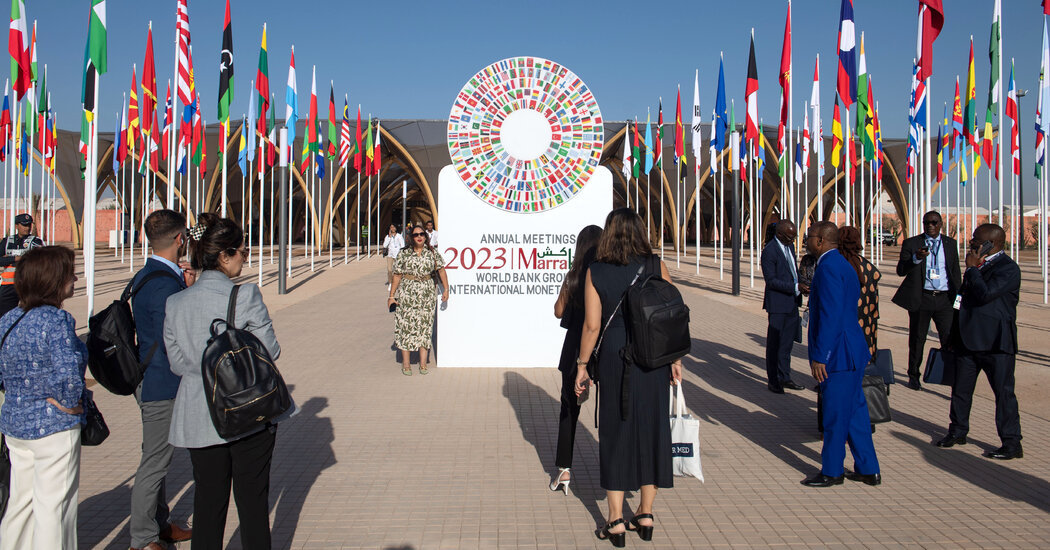This article is part of our special section on the Climate Forward event that will include policy and climate leaders from around the world.
Spiders are usually unwelcome at an art exhibition: They are hastily removed, along with their webs, to avoid scaring visitors and giving an impression of filth. Yet they are the centerpiece of Tomás Saraceno’s art.
At the Argentine contemporary artist’s first solo exhibition in Britain, which ended earlier this month at the Serpentine Galleries in London, Mr. Saraceno exhibited fragile and elaborate spider webs spun in his studio in Berlin and in some cases modified by local spiders; the air conditioning was switched off for the duration of the show, and one side of the gallery was left open to welcome living creatures from the surrounding Kensington Gardens — including spiders.
Nature, the elements and the future of the planet are at the heart of Mr. Saraceno’s art. A crusader for clean air, he also devotes much of his time to flying balloons powered only by the sun and the wind — and not carbon-emitting fossil fuels. He flies balloons over the Salinas Grandes, a salt flat in Argentina, an area mined for lithium (for use in rechargeable batteries) where water resources are being depleted in the process. The flights are meant to draw attention to the damage done by mining and air travel.
Addressing the effects of climate change is among the topics being discussed by leaders in business, politics and policy during The New York Times Climate Forward event on Thursday.
Mr. Saraceno recently spoke in a telephone interview about his love of spiders, the flip side of sustainability and Elon Musk. The conversation has been edited and condensed for clarity.
Why are nature and spiders such a key feature of your art?
Nature is within us, within our homes and within the way we live. I try to think about that relationship all the time.
There are many cosmologies around the world that do not separate nature from humans the way Western culture does. Spiders have been on the planet for more than 350 million years, and humans, for only 200,000 years.
When I was a kid, I would go up into the attic where nobody was living and was always mesmerized by these beautiful spider webs. Then, I realized that maybe the attic was not uninhabited, that somebody was living there — meaning spiders.
You have exhibited at the World Economic Forum in Davos, Switzerland, and at the United Nations Conference of the Parties, or COP, climate conferences. How have you found that?
I have stopped participating in Davos and COP conferences because I have stopped having faith in those gatherings. One exhibition in the Global North will not make as much of a difference as an exhibition or an action in the Global South. I feel more joyful and more engaged having conversations with people in the Global South who are more empathic and very honest about the way they live, how they travel, what they eat, what they consume.
Sometimes you find such hypocrisy in politicians and decision makers. And I don’t know how much the voices of the Indigenous community are heard at the COPs. So I’ve stepped back a little bit and am working behind the scenes.
We live in an era dominated by capitalism, which has been described as the “Capitalocene.” How can we transition out of it?
Historically in economics, G.D.P. (gross domestic product) has been a marker of growth. That needs to be rebalanced with other values that are much more important today. There are certain bodies of knowledge that could really teach us how to live. Between 5 and 6 percent of the earth’s population, who are considered Indigenous communities or First Nations, can preserve 80 percent of the biodiversity of the planet. They have a way of living that is much more sustainable than other lifestyles today.
Why are they overlooked?
Because there is a huge interest on the part of a few families on planet earth to keep treating resources as generators of economic value — via the exploitation of animals, plants and humanity. Eighty-one billionaires have more wealth than 50 percent of the world combined.
Maybe what we should be saying is that these are the poorest families in the world, because what they are concerned about is only economic value.
Elon Musk is one of the poorest people on this planet. Why? Because what we value should be solidarity, compassion, the possibility of dialogue, of understanding others — and this is exactly what he lacks.
Why are you critical of the green-energy transition?
We are told that it will bring benefits to most of the world. Who are the winners? People who already have enough. There has to be a more just energy transition.
Water is life. When you don’t have water, there’s no life anymore. The areas where lithium is mined are pretty dry places, but they maintain a lot of their biodiversity, their small-scale agriculture, their relationship to animals and plants. Water is almost sacred for them.
Extracting one ton of lithium requires 2 million liters of water. If a company had to pay for the 2 million liters of water, nobody would touch lithium anymore, because it would be so expensive. When multinationals pump lithium, these areas became much more dry, and desertification grows exponentially. The communities cannot live on their territories anymore. As Indigenous communities say, we don’t eat lithium. We don’t eat batteries.
You’re a successful contemporary artist, and your work is acquired by individuals and institutions that benefit from a free-market economy. Isn’t there a contradiction?
Part of my work is always trying to ensure that I do not extract that knowledge for my own benefit. Every time a work is done in collaboration with the communities, one-third of the income is donated to them. We have to think about less extractive ways of exhibiting or displaying knowledge that others have, and to extend economic compensation to them — not be naïve about that.
The Times wrote last year that you were not so much an artist as a polymath on a mission, and what you did was more science than art. What is your response?
Science is not able to communicate or to explain or be emphatic enough to really make a change. Politicians are not making it. Artists are not making it. Unless we leave our comfort zone of saying, “I’m an artist alone” or “I’m a scientist alone,” unless we engage with politics, with social sciences, with philosophy and really try to collaborate, then the world will keep going as it is.
I am very happy when they try to redefine me by saying that what I do is something that art isn’t yet, or could be. It gives me hope that art can become something other than what it is today — through collaboration, through something more hybrid, and by weaving relationships that cannot be created by any discipline alone.











